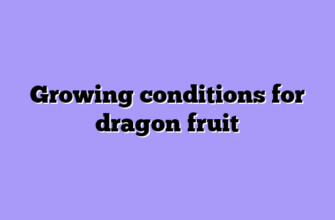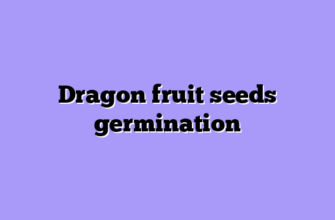Edgar Valdivia, a member of the California Rare Fruit Grower organization, made this variety by crossing Asunta 3 with Condor. The flower is pink and can’t reproduce on its own. It needs to cross-pollinate, and the flowers might need to be opened by hand. The fruit is bigger than Asunta 3 and usually weighs between 1 and 2 pounds.
Description
Hylocereus stenopterus and Hylocereus guatemalensis are the parents of the Asunta 4 Dragon Fruit. This type of plant also has a gene for the species undatus. Asunta 4 is the fourth copy in the series of Asunta. Asunta 4 is made up of two different kinds of plants: Asunta 3 and Condor. The result is a fruit that is much bigger and has less flavor than either of its parents.
| Origin: | California |
| Peel color: | Peach and its fins are lime green |
| Flesh color: | Magenta |
| Brix: | ~16-18 |
| Pollination: | Self-Sterile |
| Growth rate: | 4 out of 5 |
| Fruit production: | 4 out of 5 |
| Flavor: | 4 out of 5 |
| Commercial planting: | 4 out of 5 |
Asunta 4 grows the same way as H. guatemalensis, but it is two to three times bigger. Asunta 4 grows very quickly, just like H. guatemalensis. The plant part is a heart-shaped rib with three sides and tiny spins. It is bright green. The flesh is sweet with a sour end and tastes like a mix of cherry and berry. Brix was between 16 and 18.
Fruits weigh between one to two pounds. The mature skin is peach, the fins are lemon-lime green, and the flesh is pink to purple. The flower is about the size of a fist, and its inner petals are purple. The edges of the petals are light pink, and the tips are white. The flower bud is just as beautiful as the flower itself.
In Louisiana, the flower blooms at night and closes in the morning. Compared to other types of Hylocereus, this one blooms a lot earlier. This flower may sometimes need to be opened by hand because it sticks together and stays in the last stage of a flower bud. When the flower opens, the stigma sticks out a few inches from the anther.
During bloom, we’ve also noticed that the stigma bunches up, which is another unique thing about the flower. Asunta 4 is sterile, which makes sense because all of her other clones were also sterile.
The Enchanting Asunta 4: A Dragon Fruit Love Story
Let me tell you, folks, farming ain’t always chasing sunsets and petting fluffy cows. It’s a fair share of dirt under your fingernails, the occasional grumpy tractor, and the constant battle against Mother Nature’s whims. But there’s a magic to it too, a quiet satisfaction in nurturing something from seed to spectacular harvest. And nowhere is that magic more vibrant than with the Asunta 4 dragon fruit.
Now, I’ve dabbled in my fair share of dragon fruit varieties over the years. There’s the classic red-fleshed pitahaya, beautiful but a bit bland. Then there’s the magenta-skinned one, a real head-turner at the farmer’s market, but the flesh can be finicky, sometimes sour, sometimes sweet. But the Asunta 4, well, that’s a whole different story.

But don’t let the looks fool you. This ain’t no pageant queen just posing for pictures. The Asunta 4 is a flavor powerhouse. It’s sweet, sure, but with this undercurrent of tartness that keeps things interesting. It’s like a tropical party in your mouth, with hints of kiwi, watermelon, and maybe even a whisper of strawberry. It’s unlike any other fruit I’ve ever tasted, and it’s easily become the star of my farm stand.
Now, growing this little stunner isn’t a walk in the park. Dragon fruit, in general, is a bit of a diva. They’re cacti, mind you, so they need a good amount of sunshine and well-draining soil. Think of them like sunshine-loving succulents. But the Asunta 4 takes it up a notch. It’s a climber, so you gotta set up a trellis or some kind of support system for those long, funky stems. And unlike some other varieties, it’s a bit pickier about water. Too much, and you risk root rot; too little, and those beautiful fruits shrivel up before they even get a chance to shine.
But here’s the thing: all that extra care is worth it. When you see the first flower bud appear, this beautiful white bloom that emerges at night, well, it’s like witnessing a miracle. And then, a few weeks later, you get that reward – a whole cluster of these magnificent, jewel-toned fruits hanging off your trellis. It’s a sight that never gets old, folks.
Now, what do you do with this explosion of flavor? Let me tell you, the Asunta 4 is a culinary chameleon. Slice it up and eat it plain for a refreshing snack. Toss it in a fruit salad and watch the whole thing come alive with color. Blend it into a smoothie for a tropical kick. I’ve even seen folks use it to make sorbet and ice cream – gotta be honest, haven’t tried that one myself, but hey, the possibilities are endless!
So, if you’re looking for a fruit that’s both beautiful and delicious, a conversation starter at the market and a burst of sunshine on your plate, then the Asunta 4 is for you. It’s a little more work than your average apple or banana, but trust me, the reward is more than worth the effort. It’s a taste of the exotic, a burst of summer in every bite, and a farming adventure that’ll leave you grinning from ear to ear. Just remember, with the Asunta 4, a little extra TLC goes a long way. And when you finally cradle that perfect, jewel-toned fruit in your hands, you’ll know it was all worth it.

Conclusion
Color of flesh: purple, Brix average: 16-18%. Taste: Very sweet, with a tart aftertaste. It tastes like a mix of watermelon and pineapple. Weight: 397 grams Days until harvest: 45-50 days Self-Sterile: needs to be cross-pollinated with any other kind.








